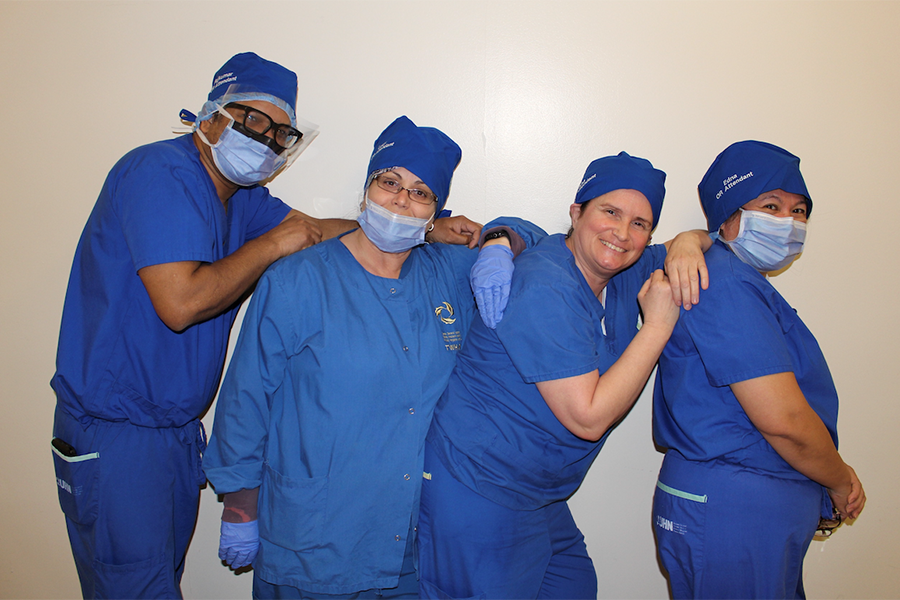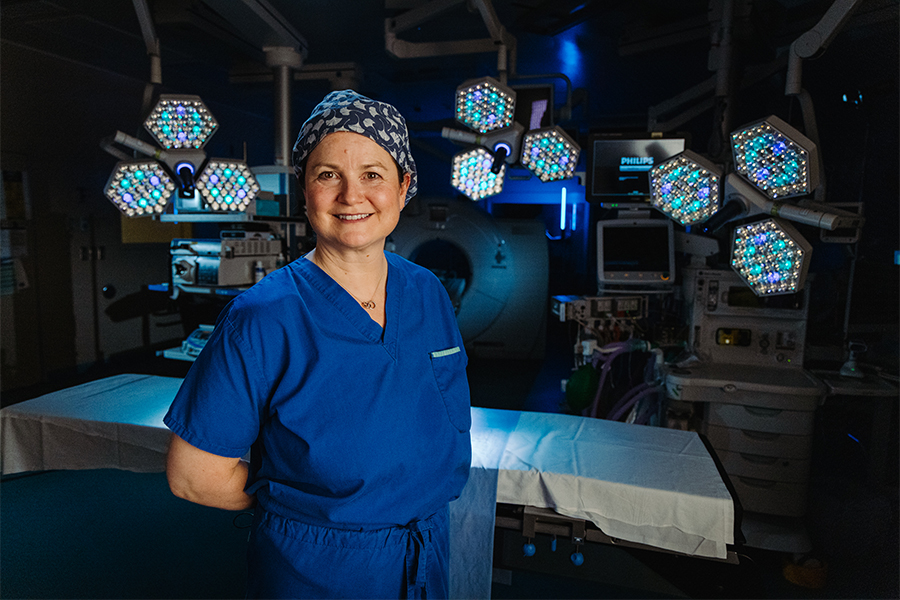By specializing in two fields, Dr. Eran Shlomovitz is applying experience from interventional radiology to make general surgery safer and easier. (Photo: Tim Fraser)
By Lindsay Kneteman
As the Sprott Department of Surgery’s lone minimally invasive surgeon and interventional radiologist – and the only physician in Canada with a full practice in both fields – Dr. Eran Shlomovitz is used to managing his busy schedule with the same exacting precision he uses to wield his endoscope – a long, thin flexible camera-equipped tube that lets him see inside a patient.
Depending on the day, Dr. Shlomovitz might be in an operating room, using his endoscope to shave an early cancerous mass off the side wall of a colon, saving a patient from painful and potentially difficult surgery. A few hours later, he could be in the interventional radiology (IR) clinic, using minimally invasive techniques to remove gallstones from someone whose health prevents them from undergoing traditional surgery.
As packed as his schedule may be, Dr. Shlomovitz’s unique background gives him an advantage: by specializing in two fields, he can adapt techniques from one area and apply them to the other. “There’s overlap between what you do as a surgeon and what you do as a radiologist,” he explains, adding that minimally invasive surgery and IR are on the same medical specialty spectrum.
Only in Canada
Interventional radiologists use medical imaging, such as ultrasounds, to conduct complex procedures while looking inside a patient in real time. Minimally invasive surgeons make small incisions – rather than performing traditional open surgery – to remove tumours and polyps, and even conduct heart surgeries. Dr. Shlomovitz specializes in both fields, further focusing on the gastrointestinal tract.
Dr. Eran Shlomovitz“There’s overlap between what you do as a surgeon and what you do as a radiologist.”
As a medical student, Dr. Shlomovitz clicked with the technical aspects required of laparoscopic surgery, a common minimally invasive procedure. But he was also drawn to IR, which he had also been introduced to as a medical student. Rather than pick one lane, he decided to do both. “Once you start using technology that makes your work easier, safer, more precise, you don’t want to go back,” he explains.
In 2012, after passing two licensing exams and a fellowship, Dr. Shlomovitz was recruited by Sprott Surgery into his dual role. He now splits his time between the general surgery and IR departments. “I’ve really benefited from having good collaboration between both departments,” he says.
Facing new frontiers
Dr. Shlomovitz says Sprott Surgery has allowed him to “build this niche where I get to explore the boundaries of surgery and interventional radiology.” He’s currently exploring an innovative procedure called magnetic compression anastomosis, which uses magnets to open certain blockages that can, for example, occur following liver transplant surgery. “The bottom magnet is on the bowel side and is delivered with endoscopy, and the other magnet, on the liver side, is delivered with percutaneous [through the skin] techniques,” explains Dr. Shlomovitz. “It’s a nice combination procedure that takes skills in both of my specialties.”
At some point, Dr. Shlomovitz won’t be the only physician pulling double duty. Other IR fellows at Sprott Surgery are increasingly interested in endoscopy and other minimally invasive surgery tools. “Having both is a good idea,” he says. “Hopefully some more people will join me.”
This article originally appeared in the 2023 issue of the Sprott Department of Surgery magazine. Read it here.


